Looking to offering a personalized product recommendation or a personalized experience of any kind? Most would say you really need to know a person, a buyer persona, or a demographic on a certain level. This is done much more easily in person, where body language, gestures, and direct interactions with products are observable.
With ecommerce sales soaring to $4.9 trillion worldwide, offering a personalized ecommerce customer experience is more important than ever.
An online user experience brings convenience and choice to the consumer’s doorstep. No traffic, no annoying co-shoppers, and relatively no stress from the inflationary gas prices!
This brings us to the idea of ecommerce personalization. What is it, and how do you provide it? Personalized marketing goes beyond simply putting a name in an email (or an email subject line). Let’s dig into the what, why, and, perhaps most importantly, the how.
What Does Ecommerce Personalization Mean?
Ecommerce personalization is an essential practice for businesses in today’s customer-centric world. You’ll be hard-pressed to find an online store that doesn’t use it.
Essentially, commerce personalization presents relevant offers and content to users based on their data. Like demographics, search or browsing behavior, purchase history, website engagement, and more. That’s why every website you land on asks if it can use “cookies.” It just means you are allowing the site to use your data. An ecommerce personalization platform is software that serves up the best personalized recommendations. It continues to improve them using artificial intelligence (AI).

What might a personalized shopping experience look like? It could be seeing a “suggested for you” section while you’re browsing an online store. Or it could be an email with the subject line, “gadgets we think you’ll like.” Ecommerce personalization reaches customers through multiple channels, and there are countless ways it can be implemented.
Importance of Ecommerce Personalization
91% of consumers report that they’re more likely to shop with brands that offer personalized product recommendations. But the importance of ecommerce personalization stretches beyond product recommendations and email marketing. It helps businesses:
- Increase brand loyalty
- Offer curated customer service to increase customer engagement
- Boost sales
- Build a thriving and profitable ecommerce business
Today, it’s almost impossible to survive as an online store without offering ecommerce personalization. It’s what consumers not only want but have come to expect.
As you can see, it’s clearly an important feature but how did we get here?
One reason for the rise of personalization is definitely the pandemic. It accelerated digital transformation across industries and created new shopping habits. It’s now more important than ever to have an ecommerce personalization strategy that helps balancing an omnichannel audience.
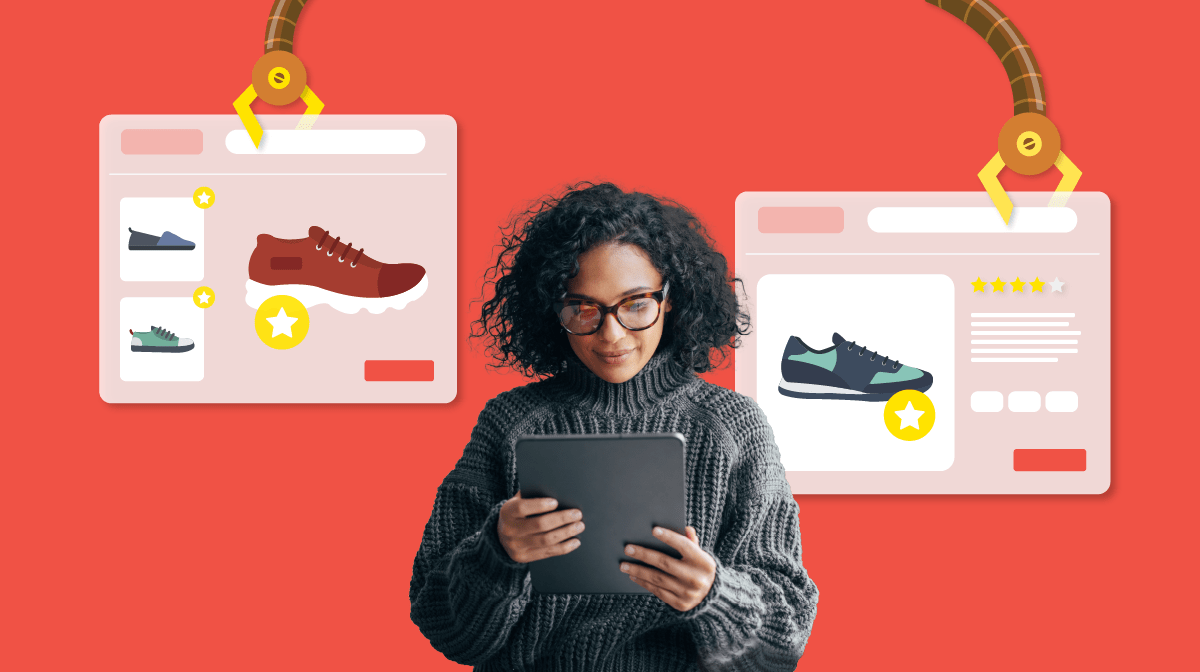
Businesses previously built connections with their customers through face-to-face interactions via their sales team, customer service reps, and cashiers. The in-person customer experience relies on actual, human personalization to build strong customer connections and make personalized product recommendations. Employees can recommend items, identify and understand repeat customers, and inform them of upcoming offers. This makes a customer’s shopping experience feel special and adds a personal element that most shoppers are looking for today.
Website personalization relies on artificial intelligence (AI) to create that same unique, curated customer experience in an online environment.
Customer data can help determine the most relevant offers and personalized content for specific visitors in a way that sales reps can’t keep up with in real time. While there is a trade-off between real in-person interactions and digital ones, AI-powered commerce personalization has become so effective that it can massively impact a business’s customer loyalty, sales, and competitive positioning.
Balancing Customer Privacy with a Demand for Personalization
One important item of note, however is the ever-shifting data privacy landscape. While shoppers do want personalized experiences, they don’t want that at the cost of their data being misused.
This has evolved into the death of the third-party cookie, but that doesn’t mean you can’t still offer great personalization. Our own research found that 51% of survey respondents would share personal data with a brand they trust. We dig into how to build that trust in our blog, Future-Proof Your Personalization with First- and Zero-Party Data.
4 Benefits of Ecommerce Personalization
1. Increase Brand Loyalty
More than half of consumers say they feel more loyal to a brand that “gets them.”
When customers feel understood by a brand and receive custom communication, a good product recommendation, or a great offer, they’re more likely to return for future purchases.
In fact, brand loyalty, specifically with millennials, increases by 28% if the customer experiences personalized communication.
2. Offer Curated Customer Service to Increase Customer Engagement
Good ecommerce personalization boils down to good customer service. It’s meeting your customer’s needs before they know they have them. Feeling taken care of goes a long way in creating a loyal customer.
Great personalization can come in the form of AI-powered search. By combining user intent via behavioral data with the “wisdom of the crowd,” you can personalize even for what we term “ cold start-users .” (And did you know that 70% of new traffic on ecommerce sites is from cold start users? Yet not all of those users are really “new”!)
Elements like query suggestions and dynamic facets, powered by artificial intelligence, create a personalized user experience at scale. Fifty-six percent of shoppers are more likely to return to a website offering recommended products.
3. Boost Sales
This is probably the most obvious benefit an ecommerce personalization platform has to offer.
Personalization helps grab the customer’s attention and reduces the amount of browsing time and energy a customer expends while browsing ecommerce sites. Presenting a customer with a product recommendation or offer they’re likely to prefer helps increase the chance of actually increasing conversions.
Forbes collected and published 50 different stats on the power of e commerce personalization. Here are just a few about its impacts on sales:
- Companies using advanced personalization report a $20 return for every $1 spent – Clickz
- Marketers report that personalization efforts can boost revenues by up to 15% – Adweek
- 95% of companies that saw 3x ROI from their personalization efforts increased profitability in the year after their personalization efforts. – Monetate
4. Build a Thriving and Profitable Ecommerce Business
Now that ecommerce personalization is so popular, ecommerce sites that don’t have them can easily fall behind their competitors. Our own research shows that 93% of consumers expect their online shopping experience to be at least equal to if not better than the in-store experience. Stumbling upon sites with poor or no personalization can be extremely frustrating for users and kill customer retention rates.
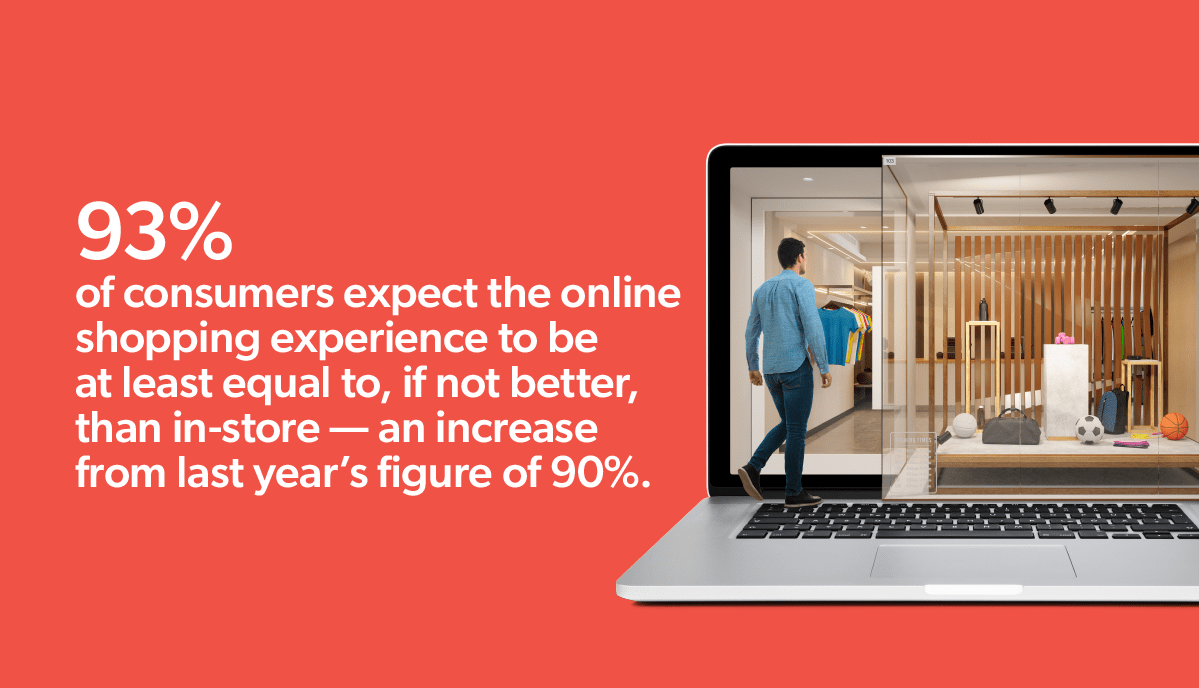
Eighty percent of frequent shoppers claim to only shop with brands that offer personalization. Sixty-six percent of customers report that coming across unpersonalized content actually discourages them from completing their purchase.
Without relevant personalization, it’s almost certain that customers will visit your competitor. (Our research found that customers primarily use Amazon. But 46% would choose to shop elsewhere if a product isn’t available, they prefer other sites, or they didn’t trust reviews. This means there’s an opportunity for your ecommerce site, if geared with the right personalization platform.)
Ecommerce personalization is necessary for a thriving online business today. But what are the best ways to use them to harness and make the most of customer data? There are opportunities for this across almost every single part of the customer journey.
10 Ecommerce Personalization Examples
1. Offer A Special Offer to First-Time Visitors
First impressions are everything! At their very first stop on the customer journey, entice customers with 10% off, buy-one-get-one, or a special seasonal deal catered to them. This is a great way to introduce customers to your brand and make it easier for them to say “yes” to an initial purchase. Getting them in the door with a first purchase opens a relationship to market to them in the future and hopefully win a repeat purchase.
Example: Glossier offers a 10% off deal and free shipping on $30 or more for the customer’s first order

2. Offer Recommended Searches to Narrow Options
For big retailers with different departments and offerings, visitors can get overwhelmed by not knowing where to start – especially if it’s their first time on the site.
Search recommendations can help narrow the customer’s choices by suggesting searches based on the user’s data combined with other factors like past first-time customer data. This helps eliminate decision fatigue and allows for a more focused shopping experience for any ecommerce store visitor.
Example: Lowe’s offers recommended searches to give the visitor a starting point
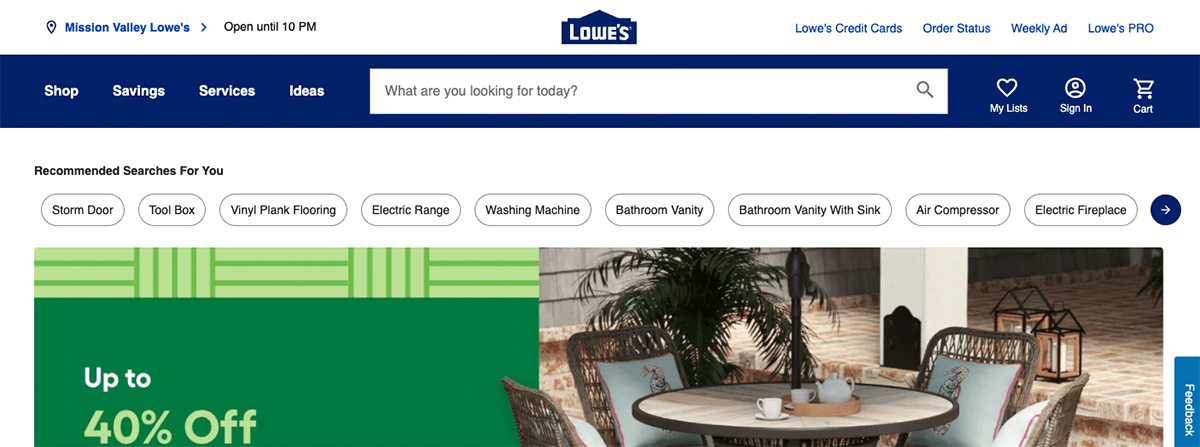
3. Suggest Popular Products
Placing popular items front and center not only helps direct customers when they arrive on your site, but it also acts as a form of social proofing to remove uncertainty around a purchasing decision based on other shoppers’ activity.
If a customer sees that a certain type of laptop is more popular than another, it will likely influence their decision and simplify their shopping experience using the “wisdom of the crowd” social proof tactic. This is especially helpful for first-time customers who are likely comparing products from multiple sites and looking for indicators that one choice is better than the other.
Example: Best Buy promotes their current most popular items as product recommendations
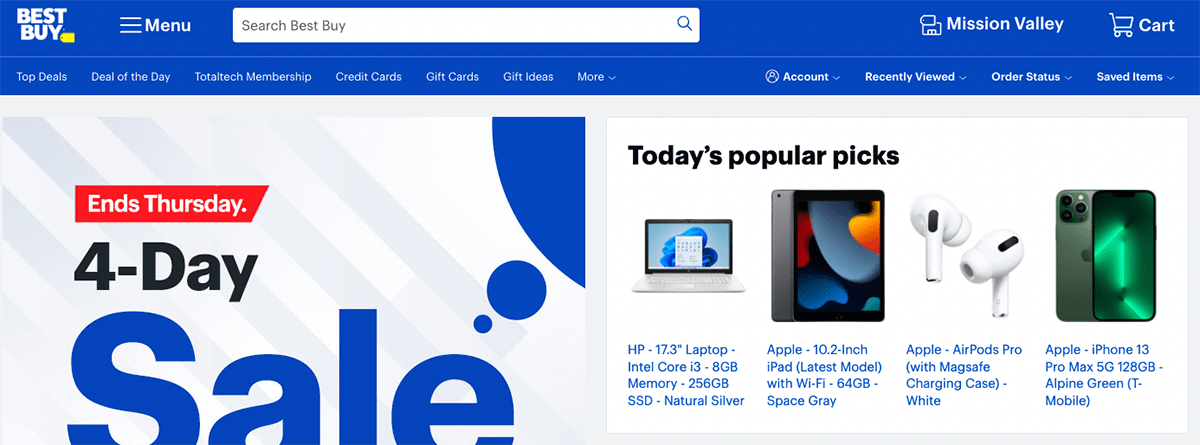
4. Show Items Your Customer Will Like
As you start collecting more data from frequent shoppers, AI helps suggest relevant items that match their tastes based on past searches, clicks, and other website interactions. This type of personalization can make a customer’s user experience more enjoyable and easy, while making them feel seen by your brand.
Example: DSW provides product recommendations that the user is likely looking for based on their behavioral data
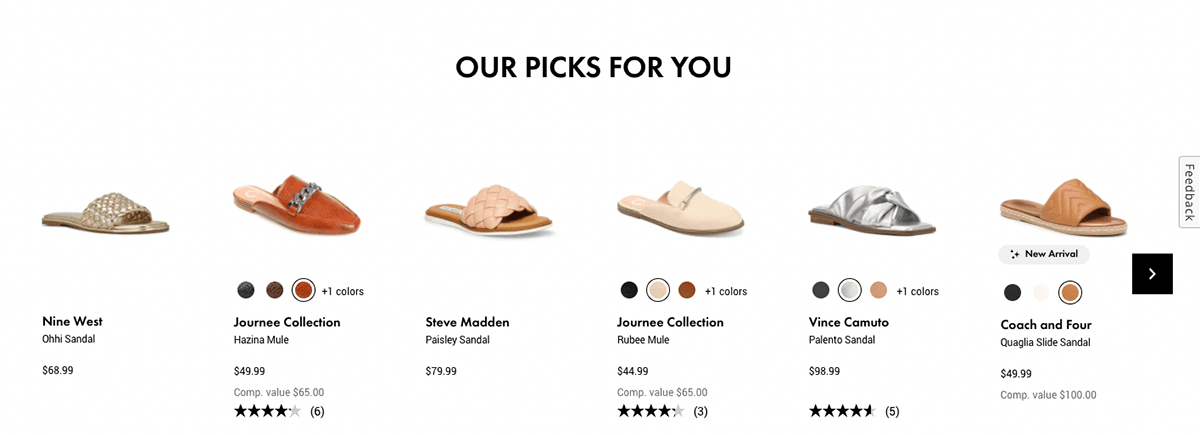
5. Help Them Complete the Collection or Look
This type of personalization acts as a friendly salesperson by suggesting what goes well with the product a customer is considering. It helps the customer see a fuller picture of the product, how it might play out in their life, and how other products could complete their purchase by suggesting items that go with the one they are looking. This often looks like a “complete the look” box or “pair with” section.
Example: Hobbs, a Coveo customer, provides styling suggestions on a trench coat product page
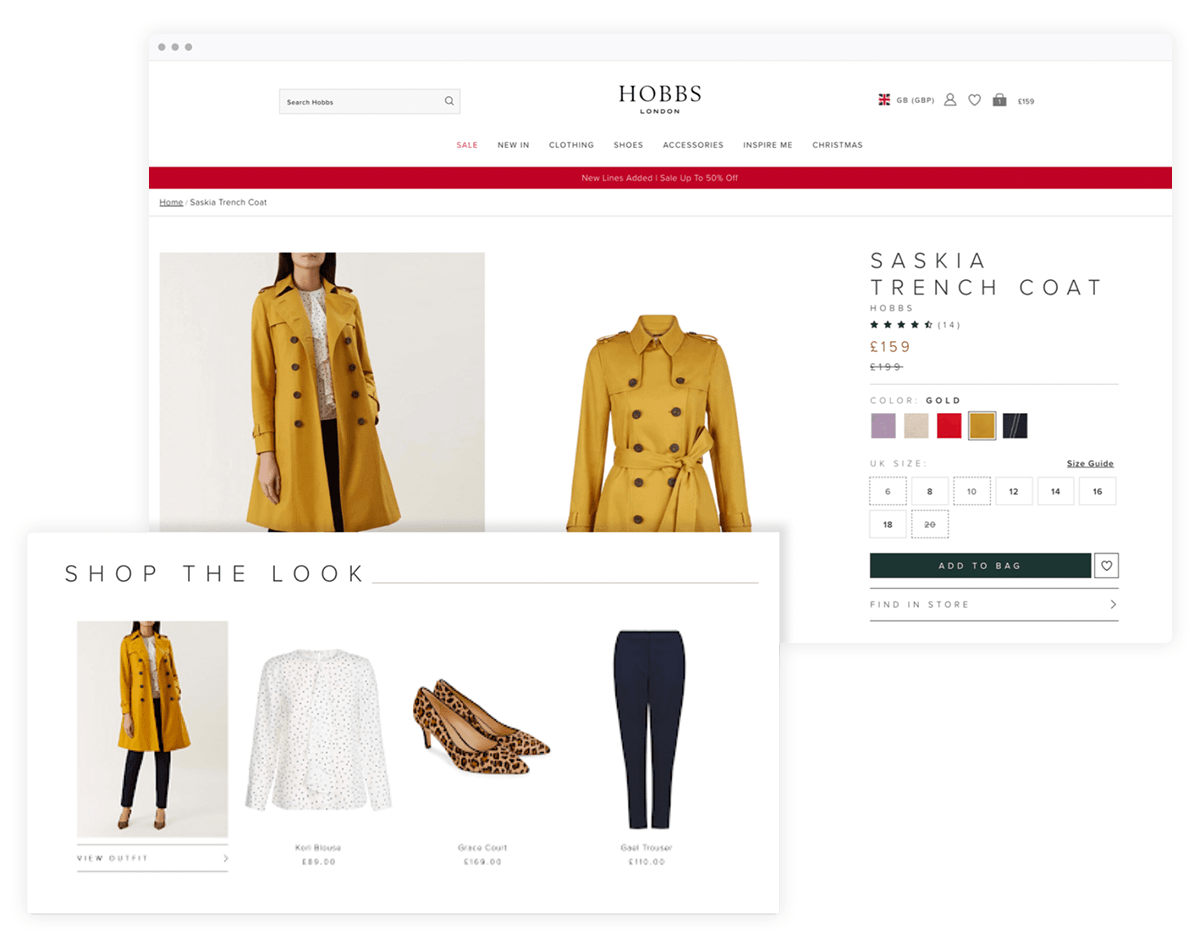
6. Suggest Complementary Products
Once the customer has landed on a product page or added something to their cart, complementary products are a great personalization strategy to upsell. It’s similar to suggesting items that go well with the product the customer is considering or purchasing, but rather than focusing on completing a look or a collection, complementary products can help make the experience of the current product better.
For example, someone who is purchasing shoes may need socks, or someone who purchased a table may need floor protectors to ensure they don’t scratch their hardwood floors. This type of personalization focuses on the customer’s next step and moves them toward making an additional purchase based on their current activity and past purchasing data. This can help customers save time by eliminating another search step for the customer which provides an elevated customer experience.
Example: Amazon suggests a screen protector to go with a phone case
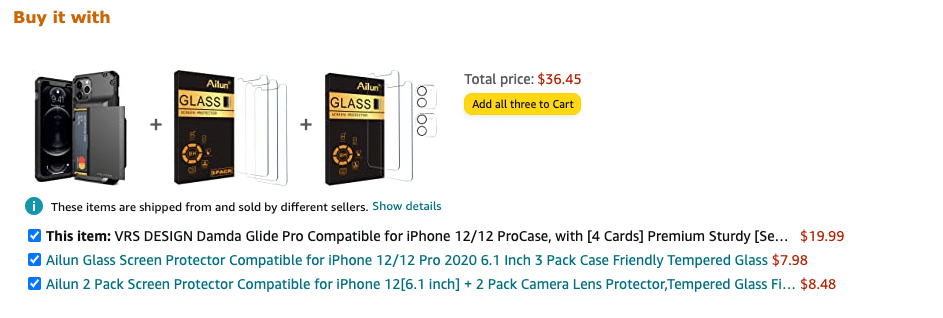
7. Personalize Exit Offers
If a visitor clicks the exit or back button without purchasing anything, exit offers can act as a last-ditch effort to make a sale. These can sometimes come across as desperate, so framing them positively and keeping them customer-centric can help make them more effective. You can offer a discount, a bundle deal, or free shipping to incentivize customers to stay on the page and complete their purchase.
Example: Express Gifts detects exit behavior and persuade shoppers to complete a purchase on their site.

8. Entice Lost Buyers
Most of us have seen a cart recovery email, but the key to making them work is making it easy for customers to pick back up where they left off shopping. A “return to cart” or “continue checkout” button minimizes the customer’s efforts to get right back to it and is more actionable than simply saying “keep shopping.” It reminds the customer where they left off and takes them there with a simple click of a button. This can be helpful for busy customers who forgot to check and for customers who are on the fence about purchasing a product. The final reminder can be the tipping point they need to follow through.
Example: Crocus, a Coveo customer, makes it easy to go directly back to the checkout cart where the customer left items waiting.
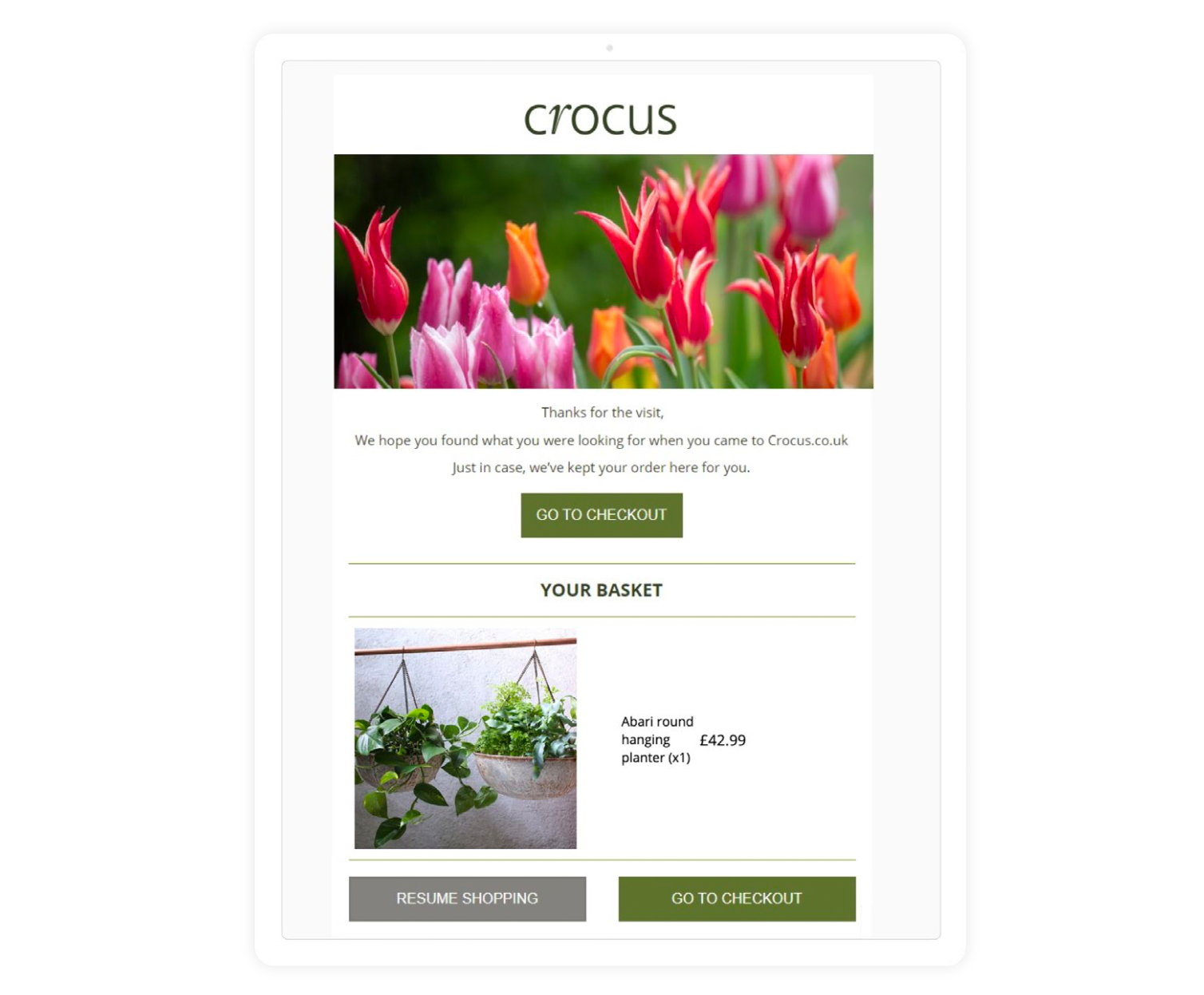
9. Email Customers With Relevant Suggestions and Deals
Sending suggestions or deals directly to a customer’s inbox can pique their interest and remind them that you’re interested in what they like. Whether it’s new items they might like or a deal especially for “insiders,” sending them something just for them can make them feel special. Most customers won’t check your ecommerce store every day or even every week for special deals, but they are likely to check their email daily. You can meet them where they’re at and offer them a personalized deal or highlight products they would like to garner interest.
Example: Banana Republic sends customers items curated especially for them
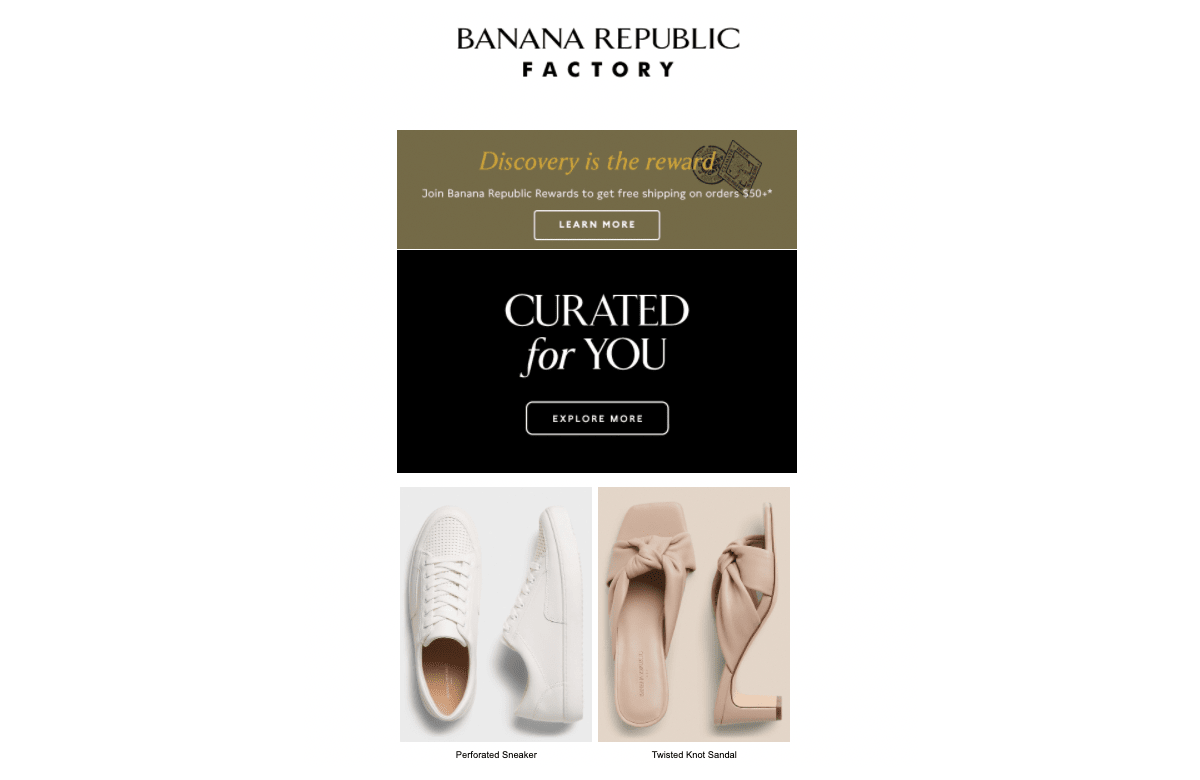
10. Bring Customers Back With A Special Deal
This personalization tactic is based on a lack of interaction with a site and can help bring back customers that have spent time away from a certain brand. This is often a profitable effort for companies because acquiring new customers can be more expensive than simply retaining old ones. The come-back personalized email can help revive an old customer and invoke their loyalty by reminding them that you know their taste and showing them that you’re still there for them.
Example: Sephora sends Insiders who haven’t purchased in a whole a special 10% discount
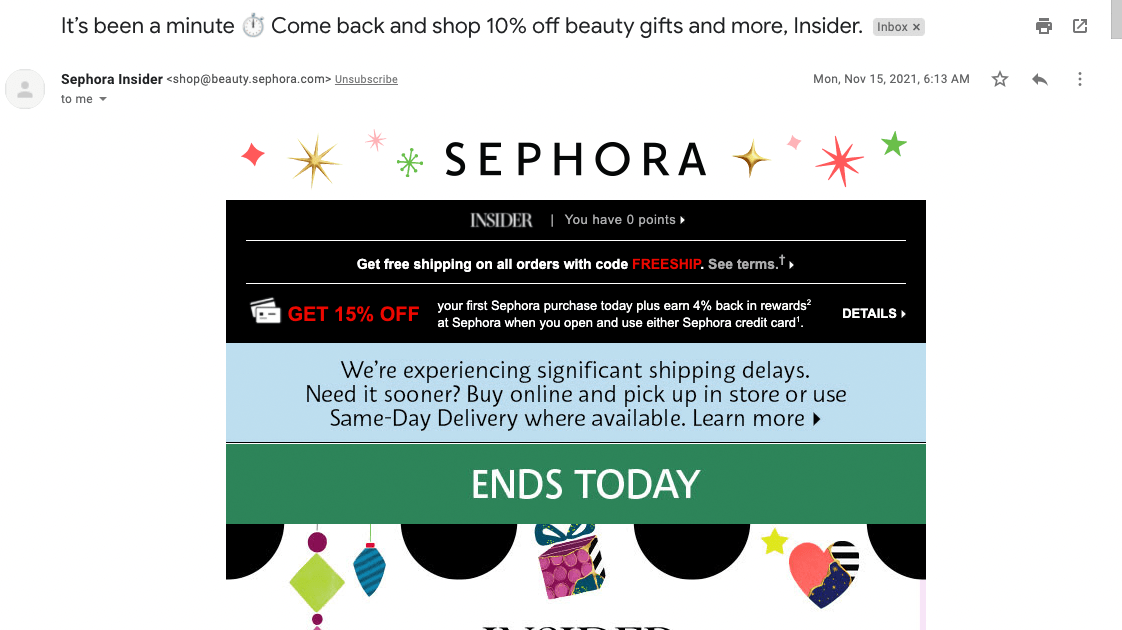
Ready to Add Personalization to Your Ecommerce Marketing?
These 10 examples highlight the importance of ecommerce personalization in your online shopping experience. Employing these examples in your own ecommerce efforts can help move the needle toward a profitable business — and away from a website that no one visits.
If you’re struggling to achieve successful personalization on your site, check out our Ultimate Guide to Personalization in Ecommerce for insights and tips on how to change that.
Dig Deeper
Want to learn even more about personalization? Check out our blog post One to One Digital Personalization: Fact or Fiction?.
And while you’re at it, read our blog Powerful Personalization in Ecommerce – No Big Data Required to learn how to personalize your website while with limited resources.
What is the No. 1 thing retailers need to do to stay relevant in today’s market? Tune in to Episode 4: Is Physical Retail Dead? of our podcast, The Ecom Edge!


